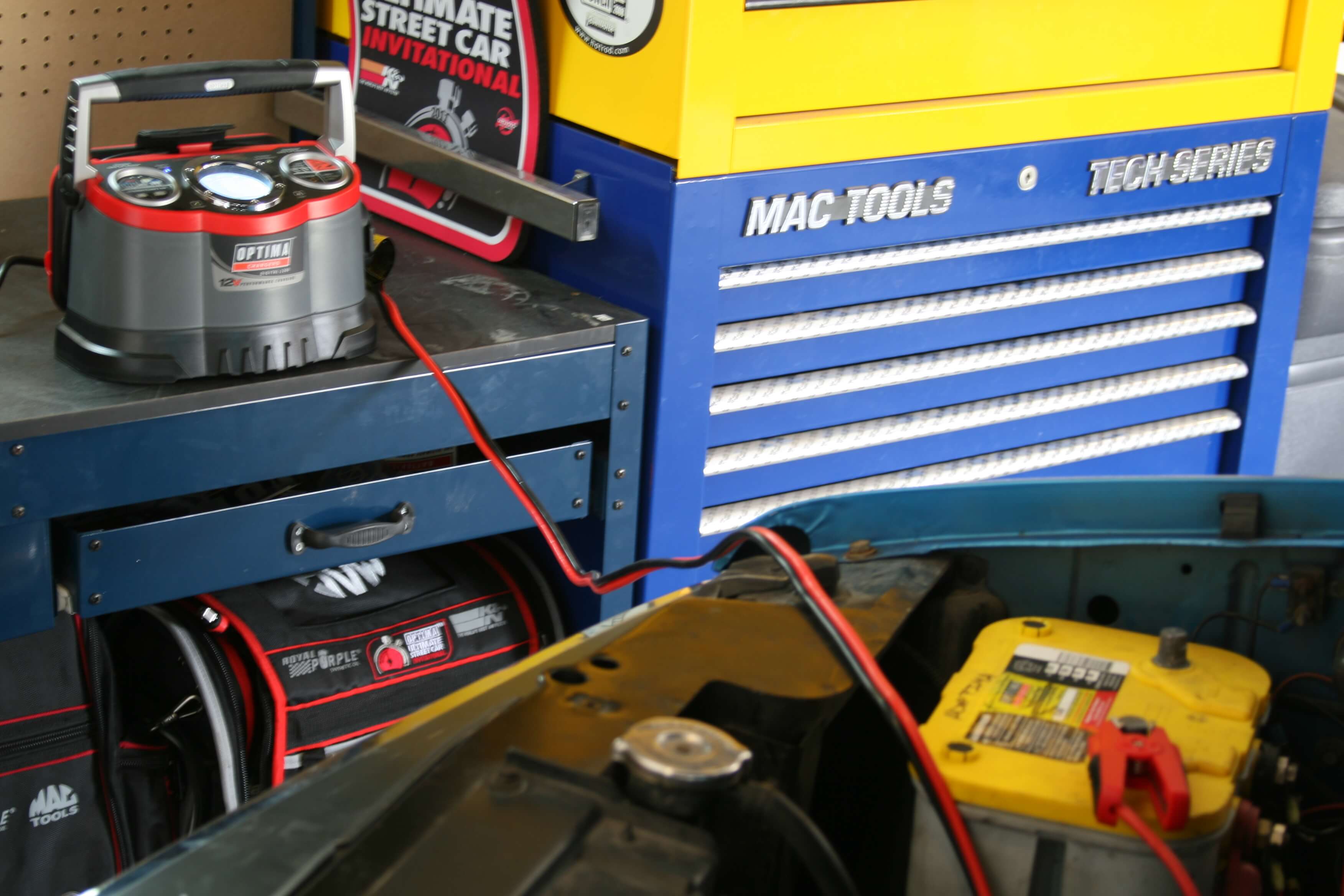Summer is just around the corner and when it arrives, there will be a wide variety of cars, trucks, boats, RVs and other vehicles that depend on OPTIMA Batteries coming out of storage. We want to make sure your batteries perform well for you all year-round, so we'll share some thoughts with you on how to best get them ready for the summer.
If you're like some folks, you may not have given much thought to maintaining your battery while your vehicle was in storage. If that's the case, it's not the end of the world, although it would be a good idea to keep your batteries on quality maintenance devices during the winter months (and OPTIMA happens to sell
a few such devices). Before you do anything to get your vehicle out of storage or even attempt to start the engine, measure your battery voltage with a voltmeter (OPTIMA chargers can also measure battery voltage).
REDTOP batteries (and the 34M BLUETOP) should measure about 12.6-12.8 volts, while YELLOWTOP and BLUETOP batteries (except for the 34M) should measure about 13.0-13.2 volts. If your battery isn't fully-charged, charge it with a battery charger before you attempt to start your vehicle. We often hear of folks who need to use a jump pack or jumper cables to get a vehicle started that has been sitting in storage. That is a bad idea.
Most vehicle charging systems, whether they are in cars, trucks, recreational vehicles or boats, are designed to maintain batteries near a full state of charge, not recharge batteries that have been deeply-discharged while sitting in storage. Asking that task of a vehicle's charging system can often lead to a cycle of dead batteries and jump-starts, until either the battery fails (expensive) or the the charging system fails (really expensive).
We also hear of folks who periodically start stored vehicles and let them idle for a period of time, in an effort to maintain proper voltage in their battery. We can't speak one way or the other on what, if any benefits this might offer for the engine, but this is also a bad idea for battery maintenance. Alternators are designed to maintain batteries that are near a full state of charge. Alternators operating at idle in such conditions usually do not generate enough energy to replace what was consumed during storage and starting can result in a net loss of voltage and premature battery failure. Even worse, driving vehicles with deeply-discharged batteries can place a tremendous strain on alternators and lead to premature alternator failure.
The bottom line is that alternators should not be relied upon to maintain battery voltage in stored vehicles. That's the job of a dedicated battery charger or maintainer.
If your battery has been deeply-discharged below about 10.5 volts and you don't have an OPTIMA charger, you may need to use this parallel charging technique to get your charger to recover your battery. If your battery has been deeply-discharged, you may want to measure the parasitic draw in your vehicle, to find out if something electrical in your car, truck, boat or RV is discharging your battery faster than you'd like. We explain how to measure parasitic draw in this video.
Once you know your battery is fully-charged and your vehicle isn't discharging your battery faster than it should, you can check the output of your alternator, by measuring battery voltage while the engine is running. We recommend typical alternator output to be in the range of about 13.7-14.7 volts. This range of operation will help ensure your battery is being properly-maintained while your vehicle is running. Some folks have dashboard-mounted gauges to measure battery voltage or alternator output, but we find the most-accurate way to measure voltage is directly at the battery terminals.
Now that you have your vehicle back in service, don't forget to keep your battery voltage maintained during the summer months, especially if you only use your vehicle on weekends or a few days a week. Hot temperatures are every bit as hard on batteries, if not harder, than cold temperatures, so make sure you take care of your battery, so it can take care of you!



